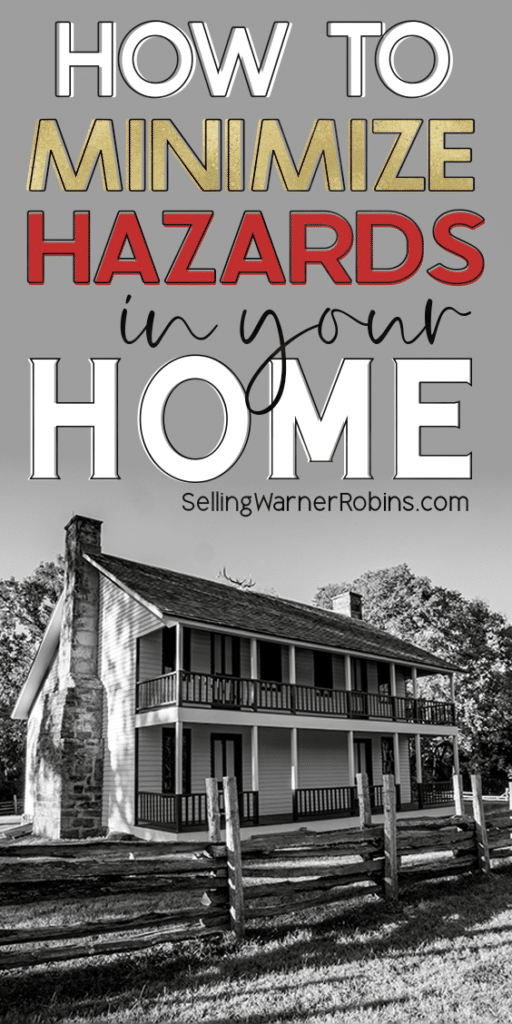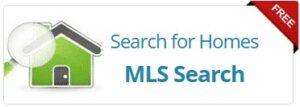What You Need To Know About Home Hazards
Several factors can play into the overall health and safety of your living space. Do you live in an older home? Are there outdated materials within your home? Depending on when your home was built, there may be more home hazards lurking as opposed to a newer home. Due to federal regulation changes over the past 50 years, materials, exposure levels, building standards, and laws to protect homeowners are vastly different then they once were. New regulations are consistently being monitored and updated in order to improve home safety. Know them to avoid home hazards that could be detrimental to you or others.
An important aspect of home harmony is renovation and remodeling. Whether you are making changes to make your home your own, or upgrading to improve your future return on investment, renovating is inevitable. Even if your home is not 30-plus years old, safety is still important for any home project. Homeowners who want to break down walls, rewire electrical cords, or expose themselves to toxins should take the necessary precautions. As always, if you being to tear down or repair, ensure you complete or hire someone to finish the work professionally, as you do not want to try to sell a home that is in poor condition!
Everyday contact with pollutants and the improper use of chemicals can prompt home dangers. Biological pollutants like pet dander can trigger allergic reactions. Natural disasters can reveal hazards. Water pipes can corrode and contaminate your water. Unventilated rooms can fill with deadly gasses.
This information is not intended to evoke fear, rather to advise you on how to handle these types of situations. They can happen when you least expect it. Let’s look into what exactly causes unsafe hazards in homes.

Home Hazard Environmental Factors
Your home can harbor environmental pollutants that make you vulnerable to various health conditions. Among these, asbestos, mold, and radon are fairly common toxins. While these substances are often naturally occurring, they can be very harmful to you and your family.
Asbestos
Before the 1970s, manufacturers added asbestos to almost every kind of building material and product. Asbestos is the name used for a group of minerals that can be found naturally on earth. It is harvested in mines and then added to various materials. It is practical for its fire, heat, and sound-resistant abilities. While all of these aspects of the substance make it seem like a revolutionary product, it is indeed extremely harmful to those exposed to it. Flooring, tiles, insulation, and roof shingles are the most common types of hazardous, asbestos-containing materials. It was not until health-related concerns started to arise that federal laws stopped the widespread use of this fibrous mineral. As a result, the last asbestos mine in the United States was closed in 2002.
Mesothelioma is a rare form of cancer associated with asbestos exposure. When you inhale or ingest asbestos, the fibers can remain in the lining of your lungs and other important organs. Tumors develop as a result of exposure to this material. Since the effects of asbestos exposure are severe, taking the measures to determine whether or not asbestos is present in your home is key to ensuring safety within your living space.
When you discover or suspect asbestos in your home, you should never touch it. Doing so could result in disturbing the fibers and making them airborne, causing you to breathe it in. Call a professional abatement company to assess and take control of this situation. Hiring experts who are properly trained in asbestos best practices will know how to handle it and safely remove or encapsulate areas of concern without exposing you and your family to any dangers.
Mold

Another home hazard to look out for is mold. Excess moisture can produce mold. In your home, a violent thunderstorm, damp winter, or muggy summer could be the reason your walls are covered in this type of fungi. A variety of textures, surfaces, and fabrics can produce mold:
- Paper
- Wood
- Glass
- Plastic
Plumbing leaks, floods, and windows with constant condensation, paired with dark, moist areas are suitable for mold growth.
Additionally, the mold itself can appear as white, yellow, black, green, or blue. Sometimes, it can appear as a stain on the wall or spots. For example, you may have seen fuzzy mold on some week-old leftovers in the fridge, or black spots in the corners of a basement.
Breathing in moldy air is harmful to your health. Respiratory protection is vital against the health effects of this toxin. If you are prone to allergies, your reaction to mold in your home may increase:
- Sneezing
- Itchiness or irritation in the nose and throat
- Watery, sensitive eyes
- Nasal drainage or blockage
- Skin rash
There could also be a risk for infection if the mold is rampant, you have a pre-existing condition that makes you more vulnerable, or you have been exposed to the mold for a long time. Mold can be especially harmful for those with asthma, as it can exacerbate the symptoms.
Once you recognize the presence of mold in your home, it is important to take care of it as soon as possible. You may need mitigation from a cleaning service. A serious case can be quite costly, but it is worth protecting your family from possible reactions. In some cases, you may be able to purchase mold-specific cleaning products to rid your home of mild episodes. You can also mitigate mold by trying to control the moisture in certain areas of your home. Increasing airflow and using dehumidifiers can help keep an area drier.
Preventing mold from forming in the first place is your best bet for reducing your exposure. Have your heating, ventilation, and air conditioning (HVAC) systems regularly serviced and cleaned to make sure there is no buildup preventing the flow of air or causing moisture retention. Should there be a disaster situation involving water, a quick response in cleanup and replacing materials can make the difference in whether or not mold will grow. A good cleaning routine in the damp places of your home (bathroom, under the sink, basement) can also help to reduce the chance of mold growth.
Radon
Another hazard homeowners should be aware of is radon. If you’re unfamiliar with this threat, radon is a gas that forms from the natural breakdown of uranium in rock and soil. This gas can become trapped in parts of your home. Most notably, cracks in your home’s foundation can allow radon to enter. Another aspect of radon health effects is the levels and duration of exposure–higher levels can be extremely unsafe for you and your family.
Lung cancer is one of the leading diseases in the U.S. Among genetic and environmental risk factors, radon exposure increases the likelihood of developing lung cancer. Radon is known to be colorless, tasteless, and generally undetectable without testing. The radon decay particles that you inhale will remain in your lungs and damage cells. Consequently, cells mutate into lung cancer.
So, what should you do to avoid this home hazard? First, you should test for radon levels in your home to see how dangerous they are. Assess the radon level in your home to determine the best way to get rid of it. A common solution to stop radon exposure is through radon mitigation systems. These work by funneling the radon to a safer outlet to stop it from coming into your home. It’s a necessary step to removing radon, which you cannot prevent by simply sealing off cracks.
Fire & Electricity: The #1 Home Hazards
According to the American Red Cross, home fires are America’s biggest disaster threat. As a homeowner, smoke detectors are essential. Fires can start from cooking, faulty electrical wiring, or candles. Following safety guidelines and checking on your smoke detectors every month will reduce fire hazards. The American Red Cross provides a comprehensive fire safety plan to teach and inform you about fire safety. One of the simplest things you can do as a homeowner to protect your family from fires is to have accessible fire extinguishers and make sure everyone knows how to use them.
Unfortunately, many homeowners do not realize the full extent of how fires can devastate a home. Even if the fire is contained quickly, the smoke damage can affect your health and property.
Electrical hazards are not limited to fires. A simple exposed, live wire can be a danger to your whole family because it could cause an electric shock to anyone who might accidentally touch it. For added safety, wires should also not be folded, placed under heavy weight, or in a densely crowded area in the home.

Electrical appliances, often with warning labels that go unread, can also cause electrocution when introduced to a water source. Items like toasters, hair dryers, lamps, and electric razors should be kept far away from bathtubs, showers, sink basins, and any other water source. The same goes for keeping outdoor radios, lighting, and other devices away from swimming pools, ponds, and places where puddles form. In the case of putting out an electrical fire, an extinguisher should always be used instead of water.
Harmful Chemicals
As a homeowner, you come into contact with various chemicals every day. Whether it is chlorine in water, bleach in the laundry, or the various cleaning supplies you use. Most of these end up being delivered to us in small, safe doses that dissipate after time. Our bodies are resilient enough to deal with some level of toxicity and leave no lasting effect. A lot of things contain harsh chemicals, but in relation to home safety, two chemicals that add to poor air quality and home danger are volatile organic compounds (VOCs) and lead.
VOCs
VOCs refer to man-made chemicals that easily emit vapor into the air. Without proper precautions, exposure to materials containing these compounds can have both short-term and long-term impacts on your health. These basic household materials could have organic chemicals known as VOCs:
- Paints
- Waxes
- Varnishes
- Cleaning products
- Fuels
These compounds release from solids or liquids and have higher concentrations indoors. Some other sources of VOCs include:
- Wood-burning stove
- Tobacco smoke
- Art supplies
There are short-term and long-term health-related symptoms with exposure to VOCs. VOCs could be cancerous, particularly if the air in your home is already polluted. Some people may experience the following at initial exposure:
- Nausea
- Headaches
- Dizziness
- Eye or respiratory problems
After long periods with high levels of exposure, patients have noticed:
- Chronic fatigue
- Liver damage
- Loss of coordination
- Eventually cancer
Monitoring what kinds of products you’re bringing into your home and looking into safer alternatives can prevent contact with toxic VOCs. Some products like paint, or cleaning supplies have “Low VOC” labels, and may be a better option than your traditional materials. You can also choose to avoid VOC materials all-together. If you are going to use VOCs, make sure to ventilate the area as well as possible with open doors and windows, and run fans to move the air out. You can also find a ventilation mask, like the kind you’d see a professional painter wearing, to help you during the application process.
Lead
Lead is no longer used in paints, and there are now stronger regulations in place due to how unsafe it is. However, it remains a toxin especially in low-income households. Lead poisoning from dust, soil, paint, and water affects children and pregnant women. In worst-case scenarios, it could be considered deadly. The effects of lead poisoning are irreversible as this chemical absorbs into the body.
As children are still growing, their bodies respond to lead differently than mature adults. Pregnant women are at risk with their unborn children because lead can get into the placenta. Even low levels of lead exposure reduce and impact mental and intellectual behavior in children. Key areas that lead exposure can have an effect on include:
- IQ
- Hyperactivity
- Attention span
- Growth
- Learning disabilities
Three ways that you could check for lead include:
- Housing maintenance
- Remediation
- Lead tests
Chemical toxins in the home can certainly contribute to whether your home is a safe place or if it is potentially unlivable. Make your own and your families health a top priority by tailoring your renovating decisions around what can be done with the least VOCs. Creating a safe and healthy environment is something you are able to do for your family all year round.
Final Home Hazard Tips
Home hazards can come in all shapes and sizes and can happen at any time. Having the knowledge behind what can occur, and how to handle these dangers will prepare you for the difficulties you might face as a homeowner. Whether an issue was caused by the previous homeowner, a natural disaster, or even yourself, taking care of the problem will only help you protect your investment and your family in the long run.
If you found this article discussing several key areas pertaining to home hazards, please share the article so more consumers can also benefit from the information.
Tips to Minimize Home Hazards
About Anita Clark Realtor
Anita Clark has written 670 posts on this blog.
by Anita Clark Anita is a residential Real Estate Agent in Warner Robins Georgia, with Coldwell Banker Access Realty (478) 953-8595, aiding buyers and sellers with all their real estate questions on her Warner Robins blog.




